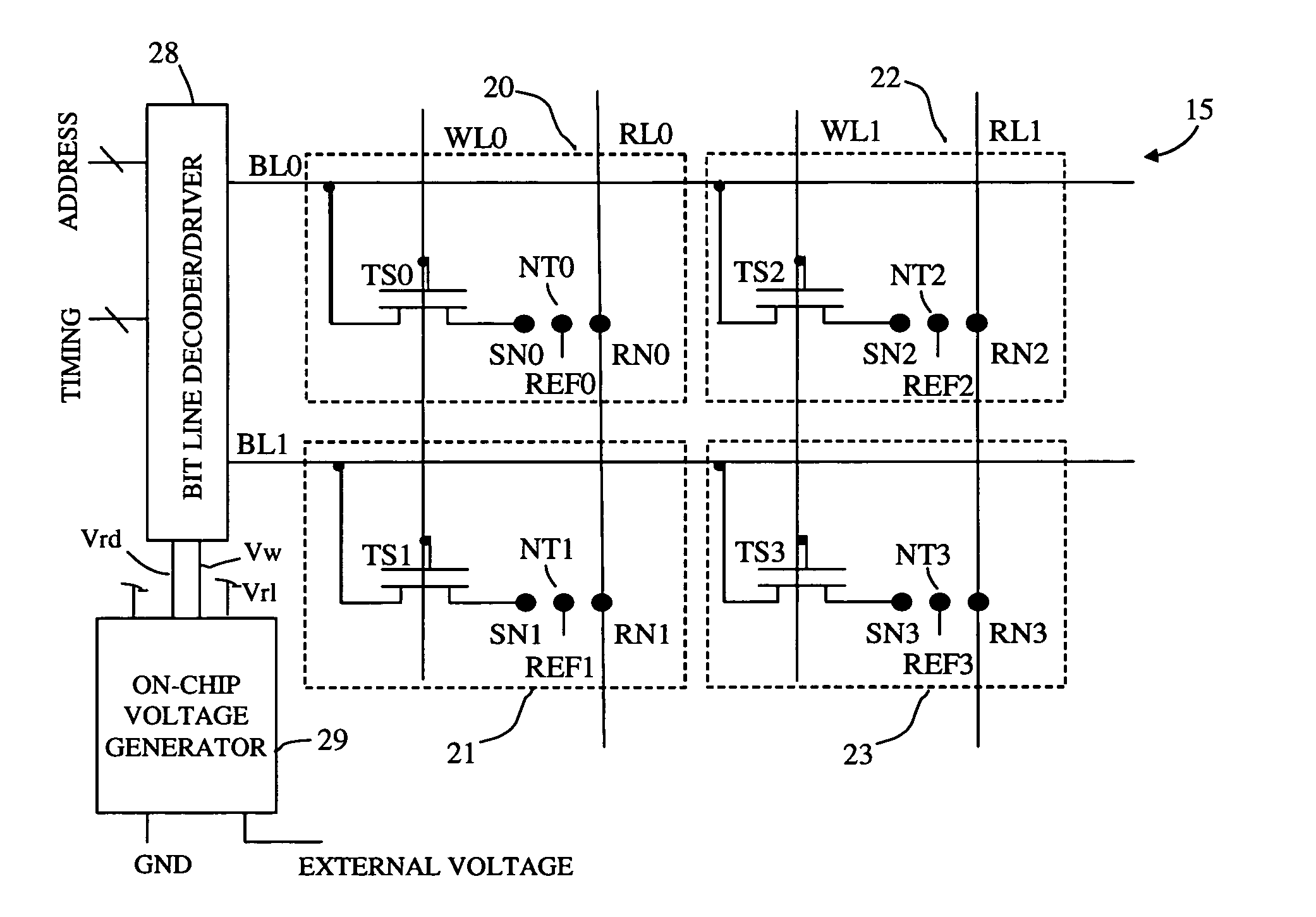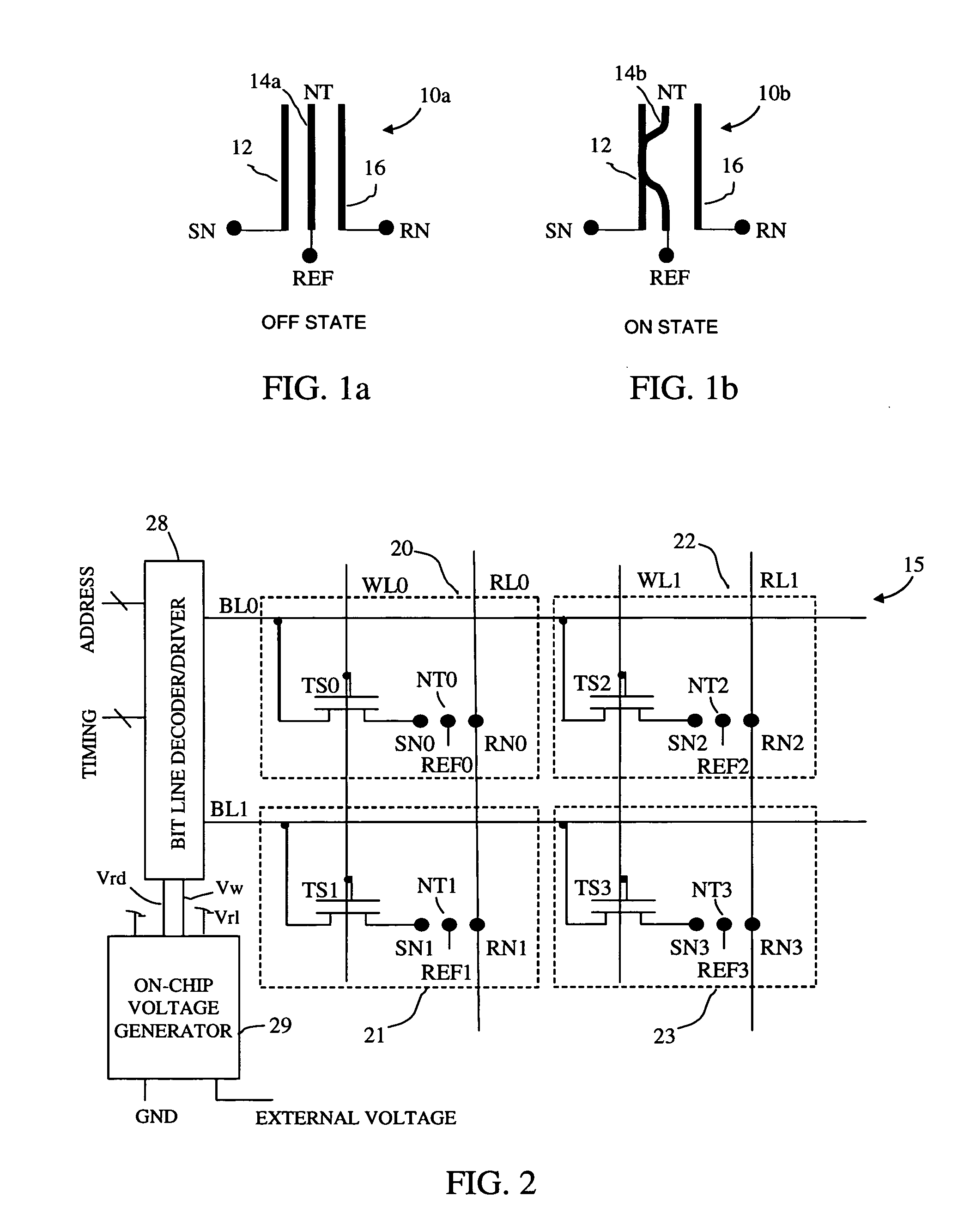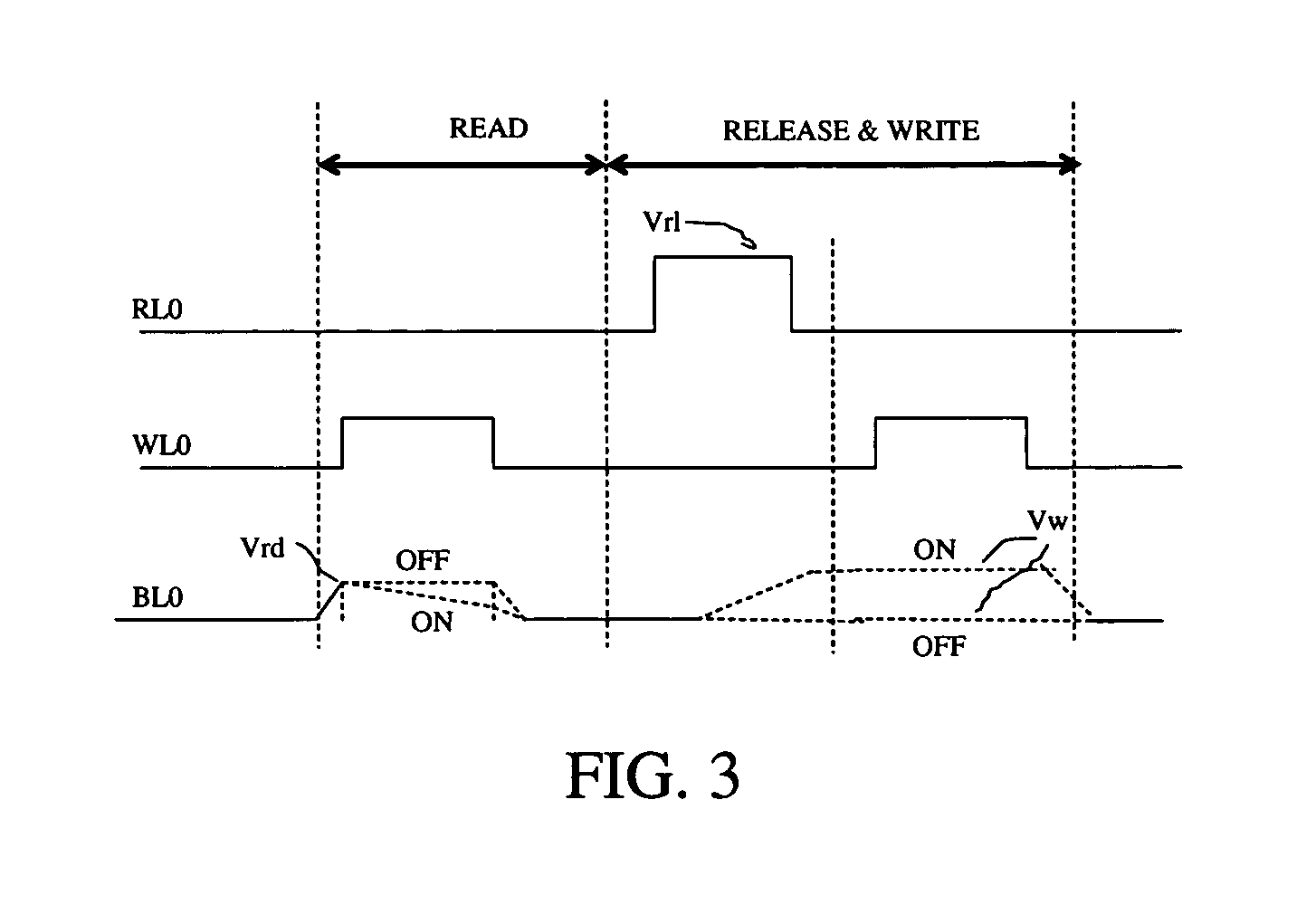Non-volatile RAM cell and array using nanotube switch position for information state
a technology of information state and nanotubes, applied in static storage, digital storage, instruments, etc., can solve the problems of long write cycles (ms), low relative speed of dram or sram, and relatively low cost of rom,
- Summary
- Abstract
- Description
- Claims
- Application Information
AI Technical Summary
Problems solved by technology
Method used
Image
Examples
Embodiment Construction
[0036] One embodiment of an NT switching component includes NFET or PFET devices, particularly NFET array devices in combination with nanotube (NT) electromechanical switching components to provide unit cells that may be employed in integrated circuits. The NT switching component has two states: an “ON” state and an “OFF” state. As shown in FIG. 1a, the OFF state 10a has an un-deflected NT 14a, resulting in an open circuit (i.e., high impedance in the range of one or more mega-ohms) between NT 14a and select electrode 12 connected to terminal SN, and release electrode 16 connected to node RN. Alternatively, the “OFF” state may have a deflected NT in contact with an insulating layer on node RN (not shown). In this OFF state, a small parasitic capacitance exists between NT 14a and select electrode 12 and release electrode 16. In the ON state 10b as shown in FIG. 1b, NT 14b is flexed and held in close proximity to a select node (electrode) by van der Waal forces, resulting in an ohmic ...
PUM
 Login to View More
Login to View More Abstract
Description
Claims
Application Information
 Login to View More
Login to View More - R&D
- Intellectual Property
- Life Sciences
- Materials
- Tech Scout
- Unparalleled Data Quality
- Higher Quality Content
- 60% Fewer Hallucinations
Browse by: Latest US Patents, China's latest patents, Technical Efficacy Thesaurus, Application Domain, Technology Topic, Popular Technical Reports.
© 2025 PatSnap. All rights reserved.Legal|Privacy policy|Modern Slavery Act Transparency Statement|Sitemap|About US| Contact US: help@patsnap.com



